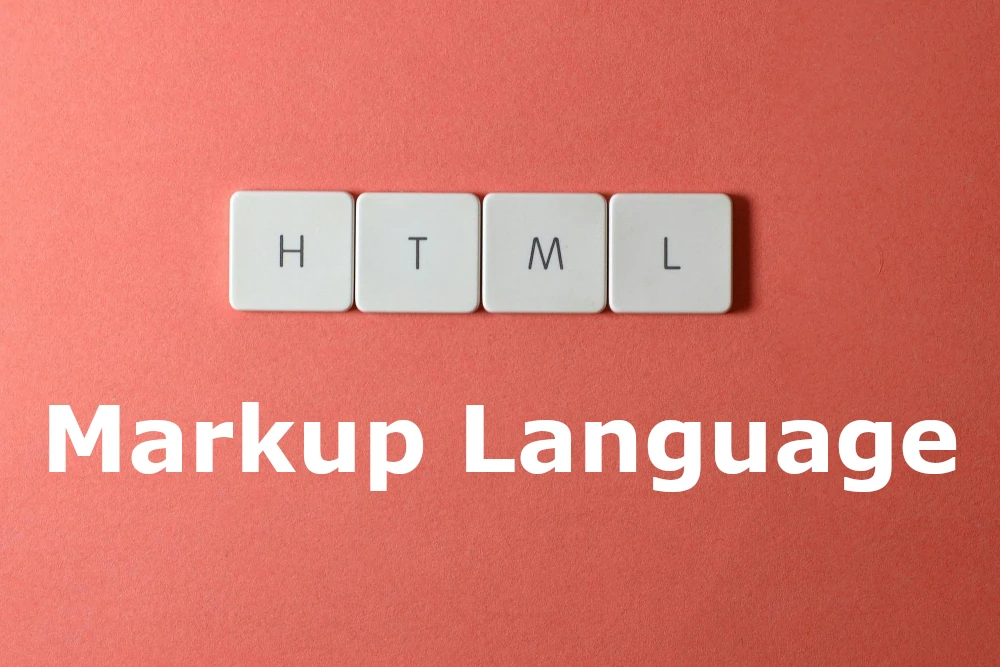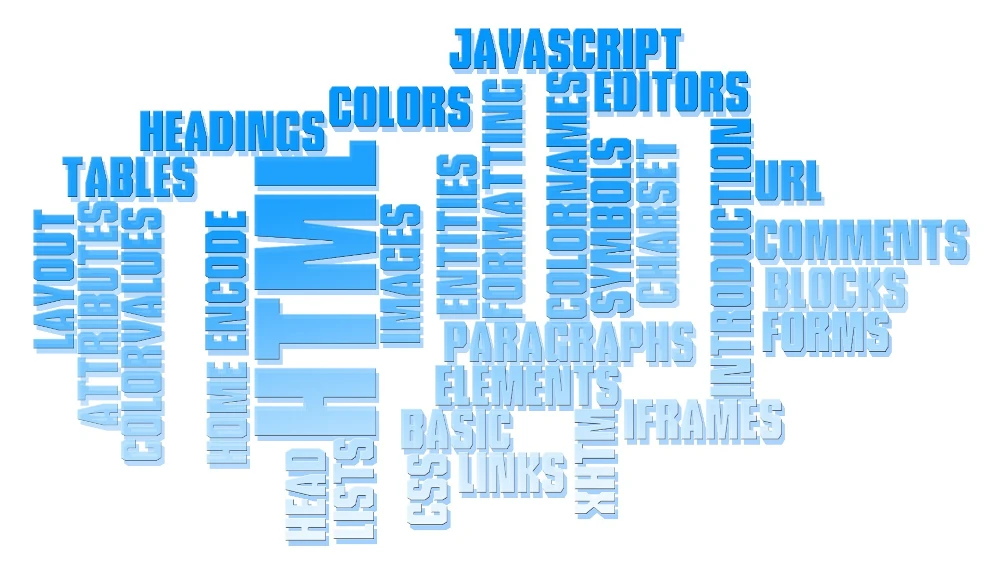HTML stands for HyperText Markup Language, which is not a programming language since it is a structural language meant for marking information according to web browsers. It is a markup language because it denotes and formats ordinary text with tags, which indicate to the browser what the content is and the structure definitions. Understanding this (and thus plainly understanding the relationship between HTML and “scripting” or “programming” languages) is essential to understanding HTML as well as how it augments web development.

What Is HTML and How Does It Work?
HTML is the initial formatting language of the World Wide Web pages. Thus, we can say that every web page is essentially an assembly of HTML elements directing the browser regarding the layout of text, images, links, videos, and so on on the page.
HTML is text, with tags encapsulating clearly defined content to determine and specify what is “meant” by the component. For example:
<h1>This is a heading</h1>
<p>This is a paragraph of text.</p>
These tags, of course, do nothing like a programming language does (i.e., making a calculation or storing a variable). They simply allow you to “mark up” information that the browser can read and interpret correctly.
What Does "Markup Language" Mean?
The word markup is borrowed from the traditional publishing and printing world. Editors would actually mark up manuscripts with information like layout, font size, headings, etc.
In HTML terms, this means using tags to tell the browser:
- What is a heading
- What is a paragraph
- What is a hyperlink
- What is emphasized in the text
- And so on
So when we say that HTML is a markup language, we actually mean that it adds metadata about how the content should be presented or “consumed,” not anything about logic or functionality.
Why HTML Is Not A Programming Language
The most common misunderstanding is that HTML is a kind of programming. It is not! Here is why:
- No logic or conditions – you can’t write if-else statements or loops.
- No variables or functions – you can’t write functions, data structures, or arrays.
- No input/output control: HTML cannot fetch or manipulate data on its own.
“HTML gives structure, not behavior.” Behavior requires a programming language like JavaScript.
If we say that HTML is the skeleton of a website, then CSS is the skin, and JavaScript is the muscle.
Understanding HTML Tags and Their Structure
HTML documents are structured using nested elements comprising opening and closing tags, each providing information about what the content is to the web browser.
Example:
<p>This is a paragraph </p>
Explanation:
- <p> is the opening tag.
- </p> is the closing tag.
- “This is a paragraph.” is the content.
- The complete image says the browser displays the text as a paragraph.
Here are some other common markup tags:
- <h1> to <h6> for headings
- <a href=””> for links
- <img src=””> for images
- <ul> and <li> for lists

The Importance of Semantic HTML for Structure and Meaning
Of the many powers HTML has as a markup language, this power of semantic value is very strong. Semantic HTML uses meaningful tags to communicate what the content is doing or is for, rather than just how the content appears visually.
For example:
- When a single, self-contained unit of content appears on a page, you use <article> vs. <div> — <article>
- <nav> vs. <ul> — <nav> tells the browser that it is a navigation element.
- <strong> vs. <b> — <strong> indicates that it is important, not just bold text.
For these reasons, we see improvements in:
- Accessibility (screen readers)
- SEO (Google favors semantic markup)
- Improvement in refactoring, or just to improve the readability of the code
What Does "HyperText" Mean in HTML?
HTML is called HyperText Markup Language because it enables linking and references between documents through the use of tags.
<a href=”https://example.com”>Visit Example</a>
This linking feature is what allowed the World Wide Web to form a system of interconnected documents.
So, HTML documents don’t just markup content. They also connect content.
Markup vs Scripting vs Programming Languages: What’s the Difference?
Understanding why HTML is a Markup language can also be understood in relation to other web languages:
Type | Example | Function |
Markup Language | HTML | Structure and name content |
Styling Language | CSS | Style the marked content |
Scripting Language | JavaScript | Adds interactivity and logic |
Programming Language | Python, Java, | Executes logic, manages backend, etc. |
By itself, HTML won’t create dynamic applications. HTML needs JavaScript for interaction and backend languages for data consumption, processing, etc.
How Do Markup Languages Work
When you visit a web page, the browser reads the HTML and constructs its DOM (Document Object Model). The DOM is a tree structure that represents every element and relationship.
In the HTML example below:
<html>
<body>
<h1>Title</h1>
<p>Intro text</p>
</body>
</html>
Would have a structured hierarchy of (like below):
html
body
h1
p
This allows:
- CSS to apply styling
- JavaScript to manipulate the content
- Screen readers can correctly navigate a page
HTML is described as a markup language as it constructs a structure-first model.
Importance of Proper Markup for Accessibility and SEO
Using HTML in the right way (semantically and structurally) is important because it allows for:
- Better accessibility: Screen readers can comprehend your page.
- Improved SEO: Search engines can comprehend what each section represents.
- Cleaner design logic: Enable the frontend team to become better collaborators.
For example:
<header>
<nav>
<ul>
<li><a href=”/about”>About</a></li>
</ul>
</nav>
</header>
It’s more meaningful than using
<div class=”menu”>
<div class=”item”><a href=”/about”>About</a></div>
</div>
These two look the same, but only the first uses HTML as a semantic markup tool.
How HTML Has Evolved as a Markup Language
HTML has grown:
- From very basic HTML 1.0,
- To HTML4, which added layout and much more,
- To HTML5, which added semantic markup.
Modern HTML is much more about meaning than layout. The more precise you are with how you are using tags, the better your website will render on different devices and platforms.
HTML and Other Markup Languages
HTML is one of many markup languages, for example:
- XML, which is used to mark up data in a structured and readable manner
- Markdown – which is a lightweight markup language for formatting within plain text
- LaTeX – a markup language for writing scientific or mathematical documents
All markup languages work like HTML. Markup languages help you structure and describe content, but not process or calculate it.
Real-World Example
You could think of a website like a book:
- HTML would be the chapter titles, sections, and footnotes, representing the structure
- CSS would be making the color of the cover and the style of the font
- JavaScript would be the interactive elements on the site, like quizzes or pop-ups
HTML is referred to as a markup language because it marks the content in a structure that can be read by machines (and humans), just like the editor/reviewer’s markups in a manuscript.
Conclusion
HTML, as a markup language, brings no control over behavior or logic. It is merely doing what it is supposed to do: mark the content and establish an order for it. The task of HTML is to provide a semantic, structured framework for the web, telling browsers (and search engines) what the content is and how to interpret it.
This understanding of HTML and its function endows developers, content creators, and designers with the ability to create accessible, scalable, and well-structured websites functioning across every platform.
So every time you make an <h1> or <section> in your code, just remember that you are not programming; you are marking up meaning in a digital language that the web understands.
FAQs
What makes HTML distinct from a programming language?
Because it has no logic, loops, or functions, the only thing that it does is structure content.
What is markup in HTML?
These are the tags that annotate and define content.
Is it possible to not use CSS or JavaScript with HTML?
Yes, however, the outcome will be static and unstyled.
Explain the semantics of HTML vs. Non-semantic HTML.
Semantic HTML puts meaning into tags, such as <article>, and non-semantic HTML gives no meaning in itself.
In 2025, would it still matter to learn HTML?
Definitely, it still is the foundation of all websites and digital content.


